Nina Notman explores the role technology can play in cleaning pollutants out of air before we breathe them in
Each year, air pollution kills approximately 7 million people globally. Reducing the amount of airborne particles and toxic chemicals produced, by shunning fossil fuels for example, is the best and often only effective tool we have against this invisible killer. This is starting to happen but progress is painfully slow. In the interim, technologies such as scrubbers on power plant chimneys and catalytic converters on cars have stepped up, offering a way to clean polluted air before it is emitted. But can technology also help us out once pollutants have been released into the atmosphere? Can we suck them back out of the air around us before we breathe them in?
Most of us will have seen at least some approaches and technologies claiming to do just this. High profile examples include house plants, smog-busting towers in urban centres and portable air purifiers. But how many of these are actually useful? The answer is some, but certainly not all.
It’s a jungle in here
Let’s start with house plants. In 1989, a Nasa-funded study reported that – in addition to carbon dioxide – house plants remove gaseous benzene, trichloroethylene and formaldehyde from the air. A number of similar studies have concluded the same. And, today, no lifestyle publication worth its salt doesn’t have at least one ‘use plants to scrub the air inside your home’ article in its back catalogue.
Unfortunately, however, this idea is heavily flawed. ‘Plants are highly ineffective at controlling air pollution,’ explains Joshua Apte, an environmental engineer and air quality expert at University of Texas at Austin, US.
You’d need somewhere between 10 to 1000 plants per square metre to have an impact on indoor pollution
The problem is one of volume. These experiments are conducted in small airtight containers. ‘A single potted plant is put it in a chamber on the order of 0.5 or 1m3,’ says Michael Waring, an environmental engineer and indoor air expert at Drexel University in Philadelphia, US. ‘A single VOC [volatile organic compound] is injected into the chamber and then its decay monitored, typically for about 24 hours.’ A reduction in the amount of VOC in the chamber is observed, and the team conclude that a plant can have a meaningful impact indoors.
The VOC decay observed in these studies is real, explains Waring – plants and their associate microbes do remove these gases. What they can’t do is suck up enough to be useful. Indoor air quality scientists have known this for a while and, in early 2020, Waring published a meta-analysis of published chamber studies to help debunk the myth. ‘We analysed 12 different studies that included 196 individual chamber experiments,’ he says. The key finding was that we’d need ‘somewhere between 10 to 1000 plants per square metre [of floor space] to have an appreciable impact on indoor VOCs’, Waring explains. That’s an awful lot of plants!
Filtering the outside air

This volume problem – whether something is able to purify enough air to be useful – comes up time and again in the air purification arena. The giant outdoor air vacuum cleaners that are popping up all over the globe are another illustration. Well-meaning companies are increasingly building towers in urban centres to host them. And in the UK, the bus company Go-Ahead has started installing them on the roofs of their buses. This started in September 2018 as a trial of one bus in Southampton, but further air-filtering buses have since been announced for the city and beyond. According to the bus company, the first bus cleaned 3.2 million m3 of city air in its first 100 days. With Southampton around 73 million m2, a quick back of the envelope calculation reveals that hundreds of millions of air-filtering buses would be needed to have a measureable impact on the city’s air quality.
The designers and supporters of these outdoor air purification devices forget ‘how large the atmosphere over a city is’, explains Richard Corsi, environmental engineer and indoor air expert at Portland State University in the US. But a bigger issue, according to Apte, is that by targeting urban air ‘you’re trying to clean about a million times more air than you actually need for breathing’.
Some smog tower designers do acknowledge the volume issue, claiming instead to provide a local solution, such as in specifically designed city parks and football stadiums. Corsi, however, notes that there is currently a lack of peer-reviewed publications to support their claims that particulate matter levels next to towers is lower than the rest of the city. ‘I haven’t seen any good journal papers on it,’ he says.
A less controversial claim from the smog tower manufactures is that their devices can act as an motivator for bigger clean air movements. Their presence in a city alone may be enough to remind people of the air pollution issue and inspire them to do more to reduce it. This is indeed a noble quest and it may even work – when Greta Thunberg started her first school strike for climate, for example, no one could have imagined what it would snowball into.
Conquering coronavirus
Ultraviolet (UV) disinfection is seeing a significant uptick in popularity during the current coronavirus outbreak. This is because, unlike other air cleaning technologies, UV isn’t designed to capture particles or gases, but instead to inactivate airborne microbes.
The UV disinfection technologies on the market are predominantly designed for use in hospitals and healthcare clinics, explains Shelly Miller, a mechanical engineer and UV disinfection expert at University of Colorado Boulder in the US.
UV technology needs to be installed and maintained by an engineer
The most widely used device is the UV robot, designed to be wheeled into vacated patient rooms. ‘These irradiate the entire room with a high powered UV lamp system,’ says Miller. Used in conjunction with a standard manual clean, these have been demonstrated to be highly effective during drug-resistant C. difficile and MRSA outbreaks in hospitals.
Two other UV disinfection technologies are gaining popularity in some parts of the world, but not yet the UK. The first is upper-room germicidal UV, where lamps are fixed near the ceiling to constantly irradiate the air in this upper space with UV light. These devices rely on natural air currents to push microbes upwards and can be run 24/7. The other technology type sits in the ductwork of forced-air systems irradiating re-circulation air as it passes.
UV disinfection technology should always be used with caution, Miller explains, because the wavelengths they use are harmful to both skin and eyes. ‘It’s a technology that needs to be installed and maintained by an engineer,’ she adds. In case it needs saying, regardless of what the US president Donald Trump said during a press conference in late April 2020, shining UV light inside the body is not a sensible way to treat Covid-19. Doing so may possibly inactivate any virus present, but not without doing significant harm to yourself too.
Heading inside
But while giant vacuum cleaners for outdoor air remain controversial, there is an air filtration approach that everyone agrees does work: filtering the air inside buildings. After all, it’s where we do most of our breathing; people in the developed world spend around 90% of their time indoors. And we breathe in a much higher proportion of the air inside buildings than we do outside air. ‘The amount of air that’s provided per person in a building is a factor of a thousand lower than atmospheric ventilation provides per person in a city,’ explains Apte.
Portable air cleaners (that work in a similar way to the outdoor air vacuum cleaners) are becoming increasingly popular. In October 2019, the US customer advocacy group Consumer Reports estimated that one in four US households own a portable air purifier.
Most of the devices don’t have enough activated carbon in them to be effective for very long
So are all these households now enjoying fresh air in their homes? The short answer, sadly, is no. The first reason is the large variation in standards across the marketplace, explains Brent Stephens, environmental engineer and indoor air expert at Illinois Institute of Technology in the US. The portable air cleaner market ‘is a little bit of a wild west’, he adds.
Devices that do a good job at particle removal are those with high clean air delivery rate (CADR). This is the fraction of particles the device removes from air in a single sweep through its filters multiplied by the amount of air the device pulls through its filters in a given time.
The type and quality of filter matters too. Those designed for particles are the most established, and include fibrous ones (that simply capture particles in their tight weave) and those which use an electrostatic charge to aid capture. Care needs to be taken with the second type to ensure ozone isn’t being generated as a by-product. ‘They generally also have much lower volumetric flow rates through them and so have a very low CADR,’ says Corsi.
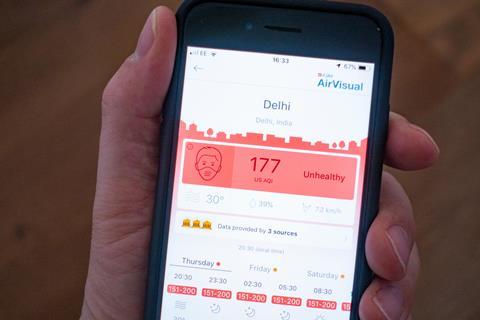
Filters are also increasingly available for VOCs and other gases. These tend to contain an activated carbon or some other adsorbent media. Unfortunately, ‘most of the devices don’t have enough activated carbon in them to be effective for very long’, Corsi says. They quickly saturate. Unfortunately, a consumer might not realise this. ‘For particle removal you can look to the CADR to have some idea of performance, but manufacturers don’t typically report a gas-phase CADR because there isn’t a widely-used test standard yet,’ explains Stephens.
Consumers also need to consider how air cleaners are used. Are they big enough for the space we are trying to clean? Do we turn them on enough? Do we replace the filters regularly? Do we locate them in the right place is our homes?
This last question isn’t easy to answer presently. There are two competing pieces of advice out there: keep them in the bedroom, where we spend around a third of our lives, and keep them in the kitchen, because the oven is the largest source of particulate matter indoors, unless there is smoke from cigarettes, incense or candles. Marina Vance, an environmental engineer and indoor air expert at University of Colorado Boulder, US, is attempting to get a definitive answer. ‘We have been doing an evaluation of whether it’s better to keep a portable air cleaner in the kitchen or in the bedroom,’ Vance explains. They are currently testing this in multiple homes.
Forcing the issue
The second place where filters can be used in the home to improve indoor air quality is in forced air heating (that are often also cooling) systems. These systems, that push either hot or cool air around buildings, vary significantly in both prevalence and design around the world, explains Jeffrey Siegel, a mechanical engineer and indoor air expert at the University of Toronto, Canada. In the UK, for example, they are hardly used at all, whereas in North America they are in over half of homes.
Filters are not installed very well in many buildings
The primary purpose of the filters in these systems is to protect equipment against big airborne particles. But increasingly, they are also being used to improve indoor air quality. As for portable air cleaners, there is both a range of different particle filters and capturing technologies available and huge quality variations across the marketplace. Adsorbent media filters for gases are also available, but they are currently specialised products that are not widely used.
From a homeowner’s perspective there is a lot that can be done above and beyond just buying a good filter, such as changing them frequently and checking they actually fit properly in the space. ‘Filters are not installed very well in many buildings meaning a lot of air bypasses them’ and doesn’t get filtered, says Siegel.
Also important is how often the system is run. ‘We did a big study looking at thousands of homes in North America, and measuring how often their systems ran,’ says Siegel. And it wasn’t very often at all. Siegel recommends automatically setting forced-air systems to come on 15 minutes in every hour regardless of whether heating or cooling is required. ‘During wildfire season in the western United States, we should consider using higher efficiency filters and running our HVAC [heating, ventilation, and air conditioning] systems more frequently to keep particulate matter levels down in the home,’ adds Corsi.
Monitoring in the home
Another technology that is assisting in the quest to protect populations from harmful air pollutants is low-cost sensors. These can’t do anything about the concentrations of pollutants in the air, of course, but they do enable us to know (approximately) what is there and take measures to protect our health if necessary. Gone are the days when the only way to know what we are breathing in is to look at the output from large scale air quality monitoring station networks.

‘Low-cost sensors come with pros and cons,’ explains Vance. ‘The cons is that they are not very accurate compared to regulatory or research grade instrumentation and need frequent calibration. The pros is that they’re cheap, so you can deploy many of them allowing us to fill gaps that we have relating to temporal and spatial resolution.’
Most of the low-cost sensors are designed for use outdoors, and today numerous networks exist globally measuring the concentration of particles in the air. Many people, especially in the western US where wildfires are a regular issue, have laser particle counters outside their homes providing real-time particle measurements.
More people are starting to use low-cost sensors in their homes. Vance is currently testing five types of low-cost air quality monitors in homes to assess how useful they might be in this context. Her preliminary research suggests that they may have a role to play in warning occupants that particles levels in the air are high, even if they don’t get the concentration quite right. She believes that indoor sensors can help ‘educate the public about what activities they perform indoors that may generate air pollutants, and can also help them figure out when to turn up their portable air cleaner’.
Indisputably, technology has a significant role to play in helping us pull down the human impact of air pollution (while we wait for emissions to diminish). This marketplace is also, however, one that contains a disproportionate number of cowboys as well as those unintentionally peddling technology that isn’t up for the job. But before rushing out to buy a reputable one, it’s worth considering if you use the technology you already own to the best of its potential.
‘From a homeowner perspective, local exhaust is an effective way to improve your indoor air quality,’ explains Waring. ‘Use a good exhaust hood while you cook and exhaust fans in your bathroom when you shower. These are both excellent ways of removing point sources effectively before they have a chance to mix into the rest of your house and then potentially persist.’
Nina Notman is a science writer based in Salisbury, UK
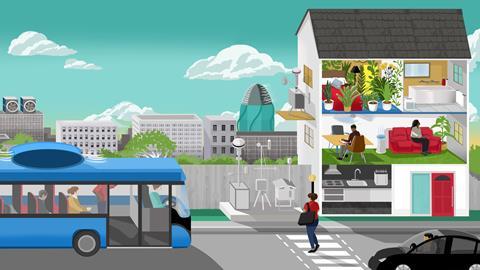

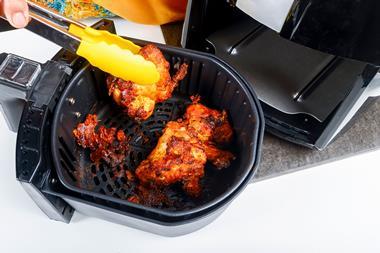

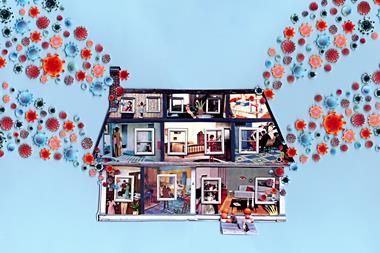

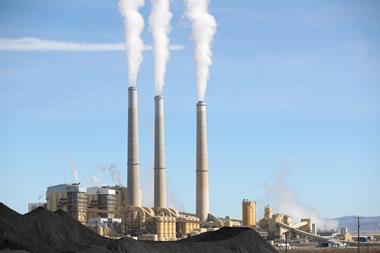






1 Reader's comment